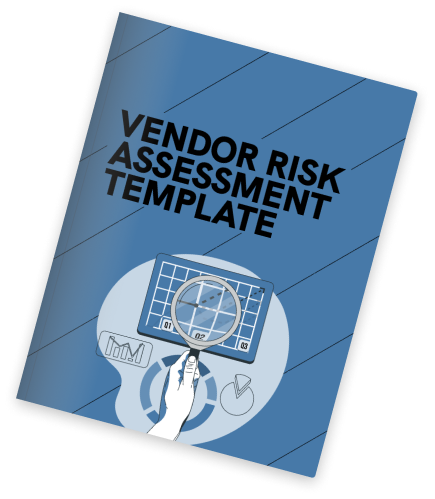
Outsourcing critical operations to third-party vendors allows businesses to save money and increase efficiency. But there are also inherent risks involved with outsourced services. Companies need to understand those risks holistically and manage them by developing a comprehensive vendor management program. It's important to take a risk-based approach to vendor management, and it requires that companies have a complete understanding of the different types of vendor risk.
Vendor risk is a broad term that covers several distinct types of risks to your company and your customers due to your outsourced vendor relationships and the services or products provided by each vendor. Identifying types of vendor risk for each vendor is a helpful method to determine what vendor risk mitigation might be necessary and what levels of risks are not acceptable for your organization.
Understanding the nature of vendor risks and identifying them is an essential component of effective vendor risk management, which starts with adequate regular due diligence on all your vendors.
Download our free vendor risk assessment template to give you an idea of essential questions you should consider asking your vendors to evaluate potential risks.

Here are the most common critical risks to be aware of when evaluating third-party vendors:
This type of risk arises from a vendor's failure to comply with laws and third-party risk management regulations or standards governing the products and services your company provides to its customers. Vendors must comply with laws, regulations, and rules passed down by regulatory bodies that affect your company and industry. Failure to meet compliance standards can result in harsh fines, enforcement actions, and a blow to your organization's reputation.
This type of risk is one of the biggest concerns when doing business with third-party vendors due to a growing number of cyber threats. It includes data breaches, ransom, malware, and cyber events. Security breaches of your vendor's systems can result in damage to your information technology systems and disrupt your business processes.
Operational risk is created by the possibility of a vendor's action that causes an operational shutdown. It's the risk of loss that may result from a vendor's ineffective or failed internal processes, people, controls, or systems. When vendors are unable to provide their services as promised, companies are usually unable to perform daily activities too. That's why you need to create a business continuity plan to limit operational risk and perform periodic vendor due diligence checks.
Gathering data from many vendors requires time and involves a lot of work.
But you can reduce your workload with START VRM, which can help you streamline the risk assessment process and attain better visibility of any risks.
This type of risk is concerned with the public perception of your company. Your company's image can be ruined in the minds of consumers, the public, the media, and investors due to vendors' actions, poor service, lawsuits, outages, fraud, or data breaches.
This arises when a vendor makes business decisions that do not align with your company's strategic objectives. Strategic risks can influence compliance and reputational risks. They have become particularly urgent due to rapidly evolving business and market trends and technological innovations, for example, the Internet of Things (IoT) and Big Data. Establishing key risk indicators (KRIs) allows businesses to effectively monitor strategic risk because they provide valuable insight into vendor operations and processes.
This is the potential negative financial impact on your organization due to a vendor relationship. Financial risk involves a vendor action damaging the financial standing of a company. The damage may come in substandard vendor work or a defective component that slows business and reduces revenue. Economic damage can also be in the form of fines or legal fees.
Knowing types of vendor risk allows companies to accurately assess the risk posed in third-party relationships during the entire third-party risk management lifecycle and classify vendors based on the threat they pose to the business.
The first step in the vendor risk categorization process is identifying your critical vendors using a risk-based approach. The vendor classification will help you determine the level of your oversight activity. You need to consider the following attributes as indicators for your classification:
You then need to add risk tiers according to your vendors' risk levels. Companies generally categorize their third-party vendors as high risk, medium risk, or low risk. The vendors that deal with the most business-critical operations or sensitive data are most likely to be rated medium or high-risk vendors. The vendors that don't interact with critical systems, networks, and data are rated low-risk.
To identify and start managing high-risk vendors, you should first create a vendor inventory. You should then remove from further review the low-risk vendors that don't have any access to your data or financial transactions, for example, vendors who supply food or office equipment and supplies.
Although you should create an inventory of your low-risk vendors, you typically don't have to take any other action because these vendors have minimal impact on your company in the event of a data breach. However, you must track them on your vendor inventory list to show you have performed your due diligence.
How often you need to conduct post-contract reviews with your third-party vendors depends on the types of vendor risk they pose and their risk levels. For example, you should review low-risk vendors annually or bi-annually, medium-risk vendors semi-annually or annually, and high-risk vendors quarterly or semi-annually.